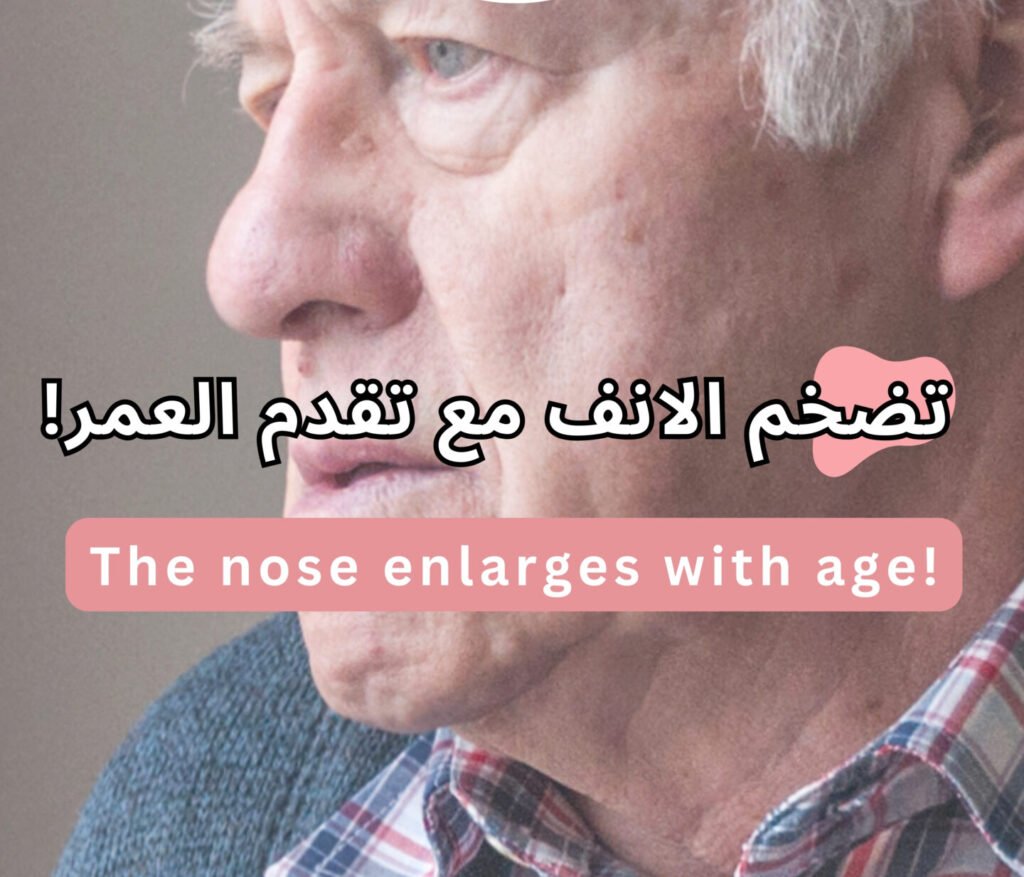
Nose Enlargement with Age and the Role of Rhinoplasty
As we age, many areas of our face change — and the nose is no exception. You may notice that your nose looks longer, droopier, or wider than it did in your younger years. But is your nose really growing? Or is something else happening?
At our ENT clinic of excellence in Dubai, we help patients understand and treat the natural aging process of the nose. In this blog, we’ll explore why the nose appears to enlarge with age — and how rhinoplasty in Dubai can restore a youthful balance to your face.
Why Does the Nose Look Bigger As We Age?
The appearance of an enlarging nose is not usually due to actual growth of the bone or cartilage. Instead, it’s caused by structural changes in the nose’s support system — mainly in the cartilage, skin, and soft tissue. Here’s how:
1. Cartilage Weakening
The cartilage in the nose provides structure and shape. As we age, this cartilage becomes weaker and less supportive. The tip of the nose may start to droop, creating the illusion of a longer or heavier nose.
2. Loss of Skin Elasticity
Aging also reduces collagen and elastin, two proteins responsible for keeping the skin firm. With less elasticity, the skin around the nose begins to sag — especially in the tip and nostril area.
3. Gravity’s Effect
Gravity naturally pulls everything downward over time. As the support weakens and the skin loosens, gravity accelerates the drooping of the nasal tip, adding to the appearance of enlargement.
4. Environmental and Lifestyle Factors
Long-term sun exposure, smoking, and poor nutrition can damage collagen fibers and worsen these aging effects. Genetics also plays a role — some people are more prone to nasal drooping or thickened skin with age.
What Does the Research Say?
Studies published in respected journals like the Archives of Facial Plastic Surgery confirm that the nose continues to change shape with age, particularly due to weakening cartilage and reduced skin elasticity.
This is important to consider when planning any facial aesthetic procedure, especially if you’re looking into rhinoplasty in your 40s, 50s, or even 60s.
Rhinoplasty for Age-Related Nose Changes
Whether you’re noticing a droopy nasal tip, uneven nostrils, or overall loss of nasal definition, rhinoplasty can address these changes and rejuvenate your look.
✅ Surgical Rhinoplasty
This procedure involves reshaping the bone and cartilage to restore a natural, youthful appearance. It can lift a drooping tip, refine the nasal bridge, and improve overall facial harmony.
✅ Non-Surgical Rhinoplasty
For those looking for a less invasive option, injectable fillers can provide subtle lift or contour enhancement without surgery. However, these results are temporary and best suited for minor corrections.
What Are the Benefits?
- Restore a more youthful, balanced profile
- Improve self-confidence
- Correct age-related nasal tip drooping
- Enhance facial proportions
- Address both aesthetic and functional issues
What About Recovery?
- Surgical rhinoplasty: Some swelling and bruising are normal for the first 1–2 weeks. Most patients resume regular activities within two weeks, with full results appearing over several months.
- Non-surgical rhinoplasty: Minimal downtime, with most returning to normal life immediately.
Choosing the Right Rhinoplasty Surgeon in Dubai
When considering rhinoplasty at 60+, it’s essential to choose an experienced ENT and rhinoplasty surgeon in Dubai who understands both facial anatomy and the unique challenges of aging skin and cartilage.
Look for a board-certified surgeon who:
- Has extensive rhinoplasty experience
- Offers personalized consultations
- Provides before-and-after results of similar patients
- Practices at a trusted ENT clinic of excellence
Real Results, Real Confidence
Many of our patients who undergo rhinoplasty for age-related nose changes report not only enhanced facial balance but also a boost in confidence. Whether subtle or dramatic, the results can be truly transformative — especially when performed by the best rhinoplasty surgeon in Dubai.
Thinking about correcting your nose shape as you age? Contact our ENT clinic today for a personalized consultation with our expert rhinoplasty consultant in Dubai.
I have read several good stuff here. Definitely worth bookmarking for revisiting. I wonder how much effort you put to create such a wonderful informative site.
I really like what you guys are up too. This kind of clever work and coverage! Keep up the good works guys I’ve added you guys to our blogroll.